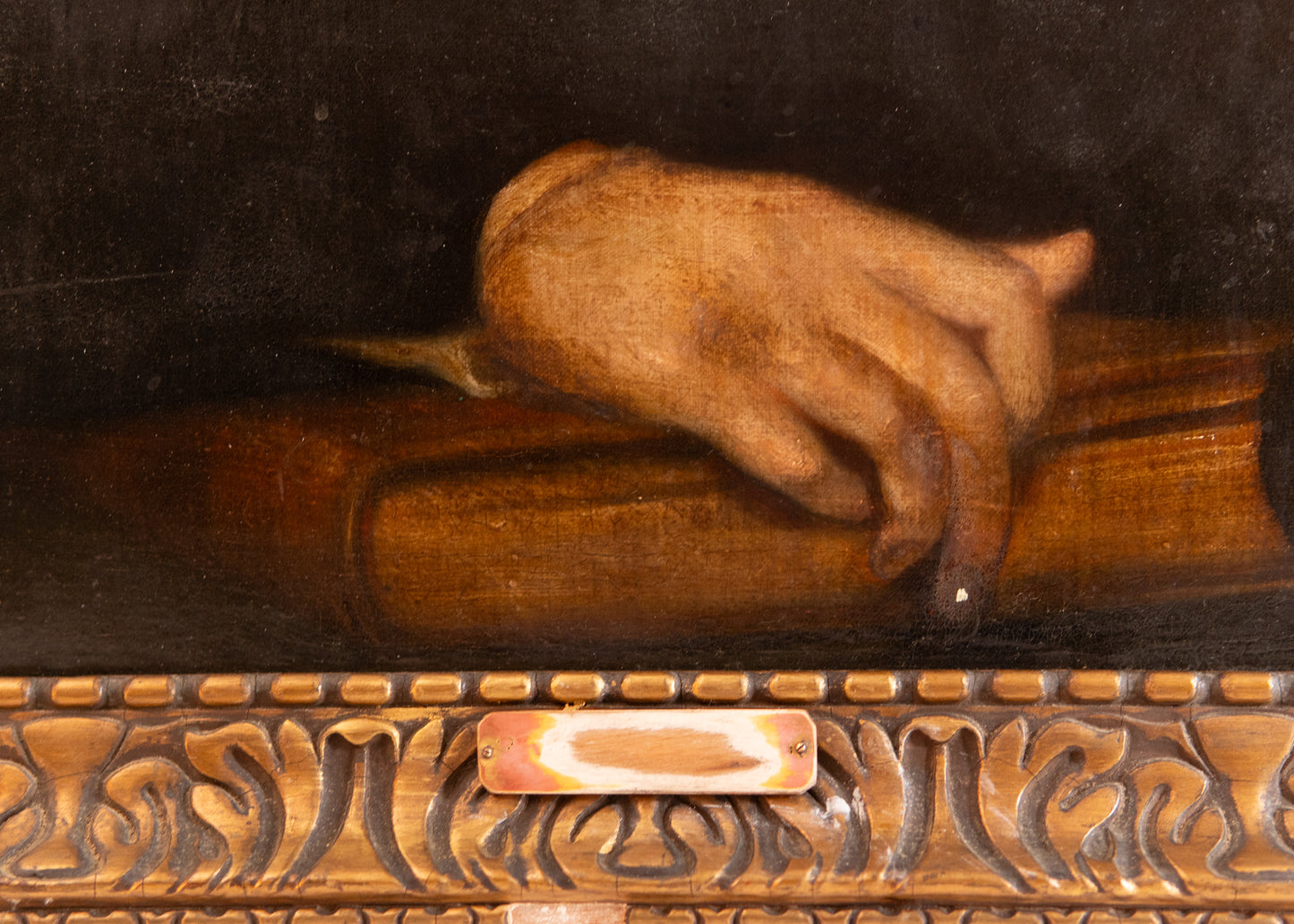Specs Fine Books
1835 RICHARD WATSON. Original and Previously Unrecorded Painting of Important Methodist Theologian.
1835 RICHARD WATSON. Original and Previously Unrecorded Painting of Important Methodist Theologian.
Couldn't load pickup availability
An exceptional original oil, dating to the early to mid-19th century of influential Methodist theologian, Rev. Richard Watson (1781–1833).
Born on February 22, 1781, he was the seventh of eighteen children of Thomas and Ann Watson. His father held Calvinist views, and Richard was brought up in the Countess of Huntingdon's Connexion. Reacting against those teachings, he attended a Wesleyan chapel as a boy, and was received there in 1794.
In 1796, Watson preached his first sermon, and moved to Newark-on-Trent as assistant to Thomas Cooper, as a Wesleyan preacher. In 1796, he entered the Methodist itinerancy, and was received into full connection as a travelling minister in 1801, being stationed at Ashby-de-la-Zouch, Castle Donington, and Derby.
In 1801, Watson married the daughter of a Methodist New Connexion preach and withdrew from the Wesleyans, joining the New Connexion the same year. This earned him a charge of being an Arian by the Wesleyans. By 1805 he had become assistant secretary of the New Connexion's conference, and in 1807 was fully admitted to its ministry and appointed secretary.
He then returned to the Wesleyan Connexion again in 1812 and was reinstated in his former position, and was charged with drawing up a plan of a general missionary society, which was accepted by the conference. He was then removed to London, and made one of the two general secretaries to the Wesleyan Missionary Society, serving from 1821 to 1827, and again in 1832, until his death in 1833.
Watson became the theologian of a Methodism deeply connected to its history, referring regularly to the Anglican communion as "the mother of us all and urging continued use of the Anglican prayer-book. Throughout his career, he displayed a keen interest keeping Methodism in friendly relations with the Established Church
A gifted writer and theologian, in 1818 he wrote a reply to Adam Clarke's doctrine of the eternal Sonship of Christ; Watson believed that Clarke's views were unorthodox and, therefore, not faithfully Wesleyan. This was followed by other occasional works. His primary contribution to Methodist theology, his Theological Institutes, was written over the course of 6 years, from 1823 to 1829. It was immediately influential and remained a systematic theology standard for many years and continues to rank among the ablest expositions of the Arminian system. Historically, it was the first substantial attempt to systematize John Wesley's theology and, by extension, Methodist doctrine.
The present painting, measuring 27 x 35 inches [sans frame] and 31 x 39 [with frame], is previously undocumented. There are 5 other known early paintings of Watson, including one at the Museum of Methodism in John Wesley's House in England. The present appears to be distinct, though it is not known whether it was painted during his lifetime or shortly thereafter.
It has long been in storage in a Georgia estate and seems likely to have been hung in one of the many early Methodist seminaries that populated Georgia and the surrounding Southern and Eastern states.
The frame has some light losses to gesso and gold gilding. Original brass title piece from the bottom is absent, but can be easily replaced. The painting itself is in a good state, though would benefit from having the old varnish removed and replaced and the few minor paint losses replaced. We are happy to assist with recommendations for restoration work if the purchaser is interested. It is perfectly stable and attractive as is.
Share
















